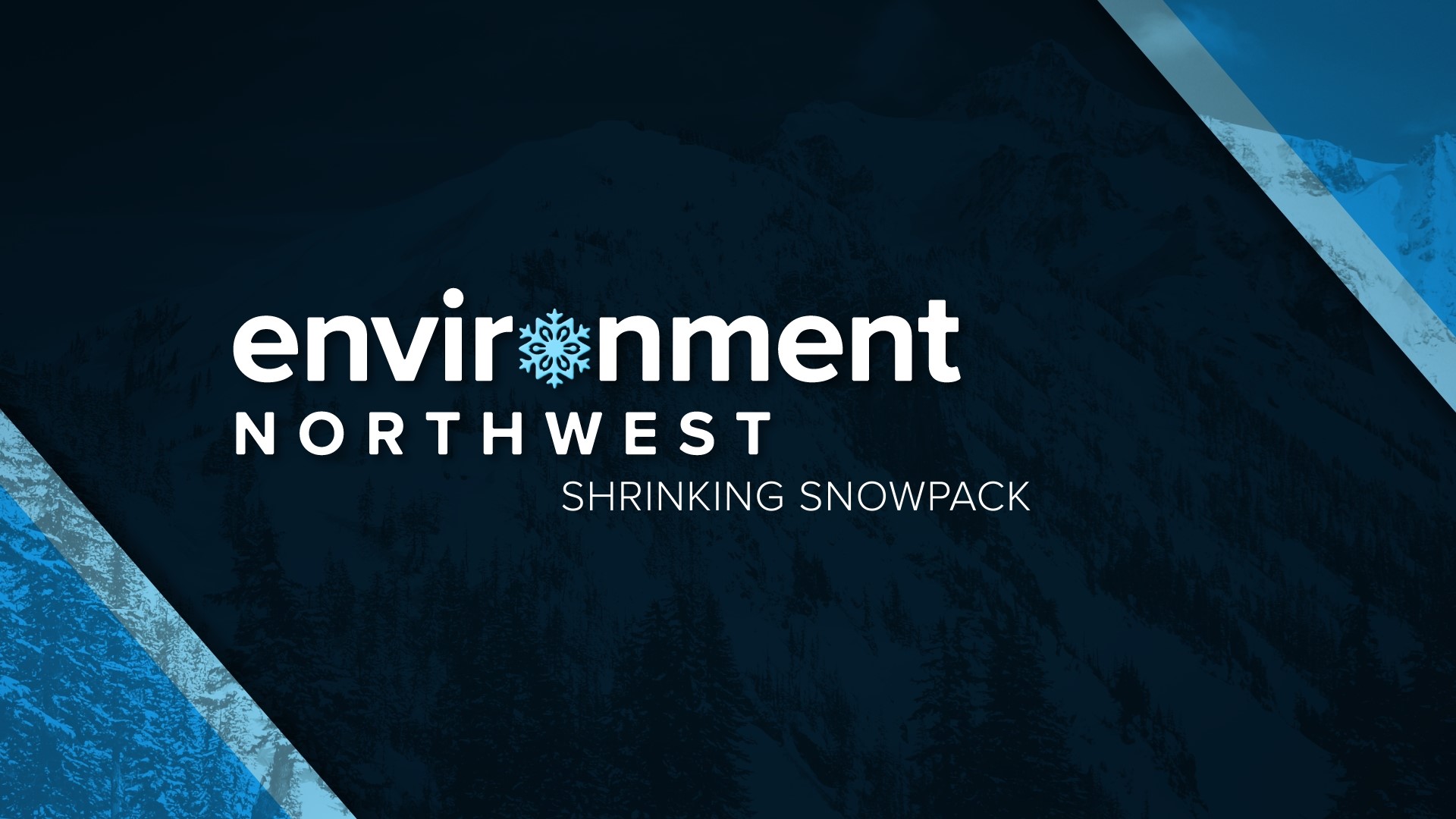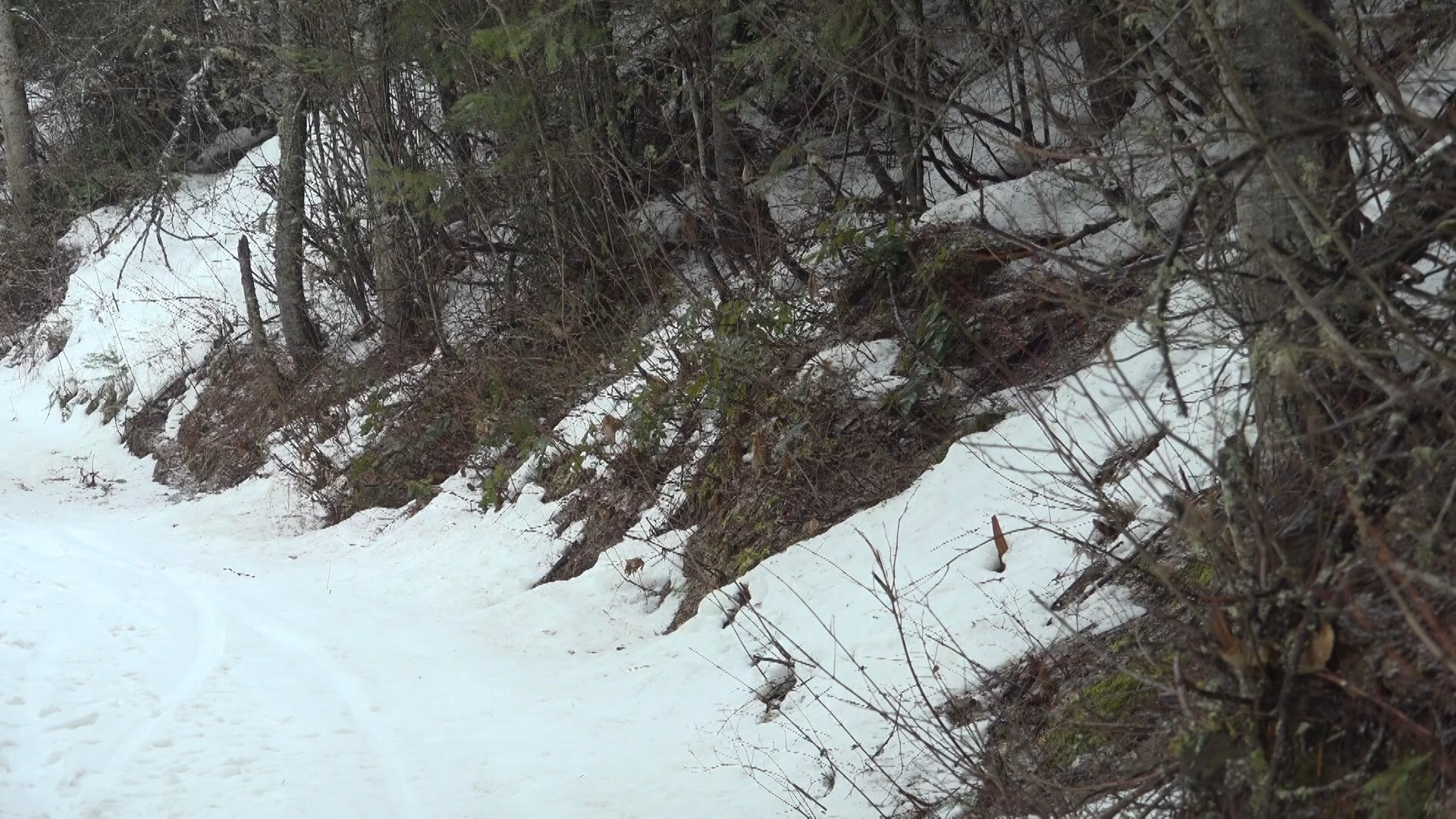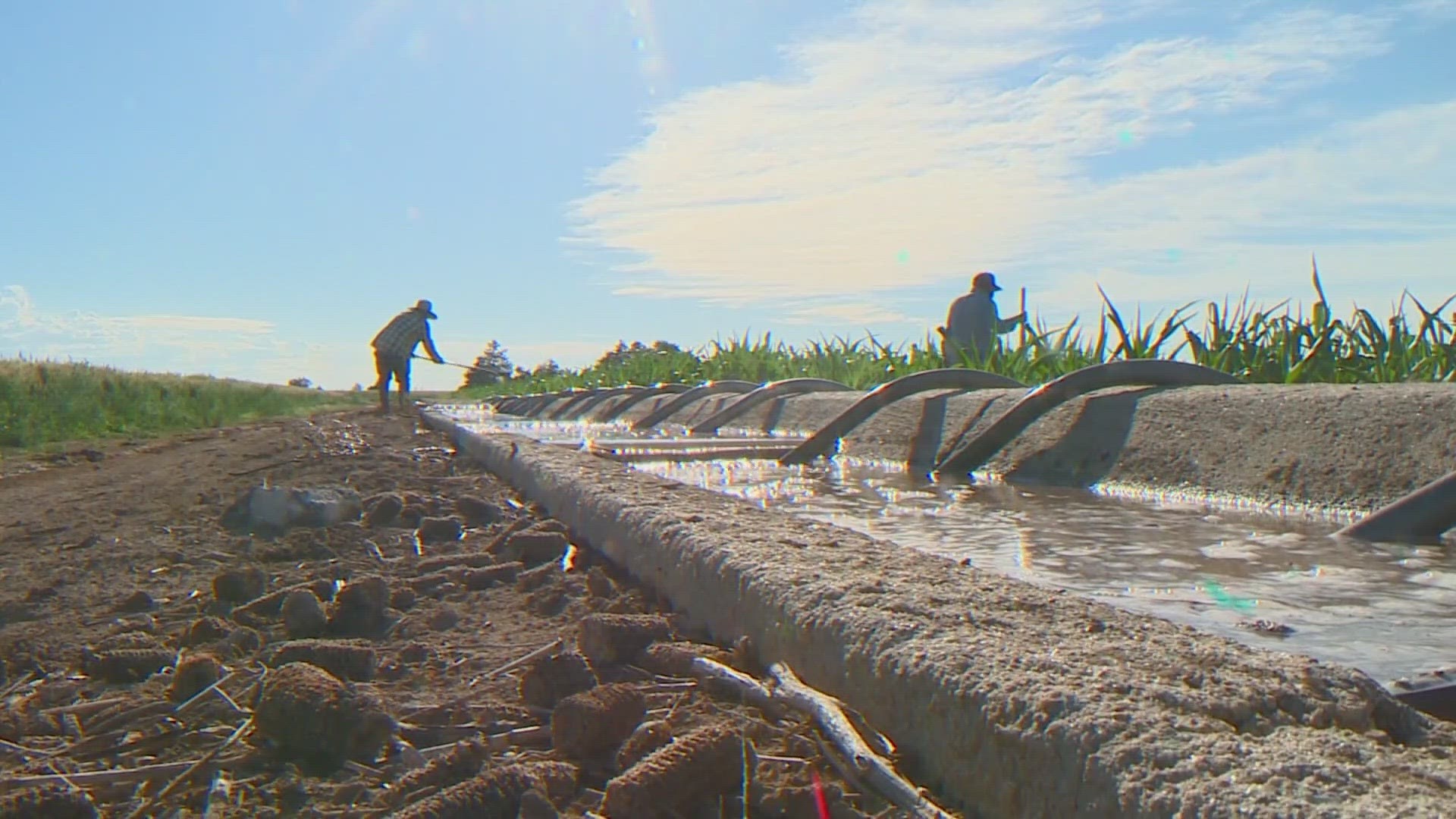Snowpack in the Pacific Northwest is shrinking. Here's what that means for the future
This week, the Environment Northwest team takes a look at how the shrinking snowpack is impacting Washington, Idaho and Oregon.

The snowpack in and around the Pacific Northwest is shrinking significantly, and it's only getting worse.
The impact is widespread. In this series, our Environment Northwest team looks at what's happening in western and eastern Washington, Idaho and Oregon — and what these environmental changes mean for the future.
Washington's snowpack could melt to nearly half by 2080 KING 5 Meteorologist Leah Pezzetti explores the history, and future, of western Washington's snowpack
KING 5 Meteorologist Leah Pezzetti reports from the Cascade Mountains, about 50 miles east of Seattle where it's been an unusually warm winter, thanks to this season’s El Niño forecast. Snow totals are a fraction of normal, creating a domino effect on many industries.
As of mid-February, Washington’s Cascade Mountains sit between about 50-75% of normal snow water equivalent. The Olympic Mountains are not even a third of normal.
Data shows that looking big picture, the snow season is on a steady decline since the 20th century.
A map from the EPA shows the trends in April snowpack in the western U.S. from 1955 to 2022. In Washington, most areas’ snowpack is down between 20 to 30%, with some areas decreasing as much as 50 to 60%.
Looking forward, those trends continue. A University of Washington report projects that in the 4,000 to 5,000 foot range of the Cascades, the length of the snow season could decrease by nearly half by the end of the 21st century. This means that the historical 142 days of snow on the ground in the second half of the 20th century will drop to 87 days on average in the 2080s.
Researchers say the cause of such shrinking is surprising. Read more.
Shrinking snowpack isn't new for parts of the Northwest KREM Meteorologist Jeremy Lagoo explains the impacts on the Cascades, Rockies
KREM Meteorologist Jeremy Lagoo reports from Spokane, Washington, where two massive mountain ranges — the Cascades and the Rockies — are facing environmental changes.
More than halfway through winter, the mountains of eastern Washington and north Idaho are under moderate and severe drought due to the lack of snow on the ground.
But this lack of snow isn't necessarily a new thing. USDA data shows a decrease over time in the Snow Water Equivalent at SNOTELs around the region.
Between 1955 and 2022, all stations in eastern Washington and north Idaho recorded a reduction in peak snowpack. That number is just over 20% in higher elevations, while one lower elevation station in north Idaho measured a drop of more than 70%.
But it's not just the overall amount of snow; it's also how long that snow sticks around.
Between 1982 and 2022, the Northern Rockies saw an average decrease in about 15 to 20 days per season of snow being on the ground. So, not only are we not getting as much snow, but it's also not sticking around as long, and early spring warmth is melting it much faster.
These changes already impact mountain runoff, increased fire danger, and longer fire seasons. Read more.
Snowpack is crucial for Southern Idaho's water supply KTVB Meteorologist Sophia Bliss shares how the melting snowpack impacts farmers
KTVB Meteorologist Sophia Bliss reports from Boise, Idaho where in southern Idaho, snowpack and reservoir levels directly relate to a successful irrigation season and farming.
A crucial element of Idaho's water supply, snowpack, is trending down. A Dartmouth study said since the 80s, the Northwest lost 5% to 10% of snowpack, each decade. They attribute the decrease to a changing climate.
"But we would be a complete desert without the without the snowpack. It's everything," said Lance Phillips, owner and operator of Gem Orchards in Emmett.
Snowpack in Idaho, Oregon, and Washington is essential to a successful irrigation and farming season. The snowmelt feeds into our reservoirs and our reservoirs are like a savings account. Ideally, the water will be there when we need it. The runoff in reservoirs flows through rivers and canals to homes and farmland.
Current systems to capture water, like dams and reservoirs, work best when the environment stays within historical norms and a gradual melt in the spring. Several of those norms are shifting, including the snowpack.
In drier years, water managers have ended the irrigation season early, creating pressure for farmers. Read more.
How are Pacific Northwest salmon populations changing? KGW Environment Reporter Kale Williams shows how snowpack changes alter salmon populations
KGW environment reporter Kale Williams reports from Oregon, where a shrinking snowpack plays a role in the changing salmon population.
The decline of salmon and steelhead has a number of causes. Hydroelectric dams have left them cut off from their habitat and altered river flows. Hatchery fish have caused issues with their genetics. Some runs have been over-fished.
“We watch with a lot of anxiety how much snow is piling up in the Cascade Range,” said longtime fishing guide Bob Rees.
Snowpack in the Pacific Northwest has been shrinking for years, especially at lower elevations, and that trend is expected to continue as climate change continues to push temperatures upwards.
Under a “business as usual” scenario, where greenhouse emissions remain unchecked, Pacific Northwest snowpack is expected to decline 60% by 2050, according to the most recent Oregon Climate Assessment. Read more.





